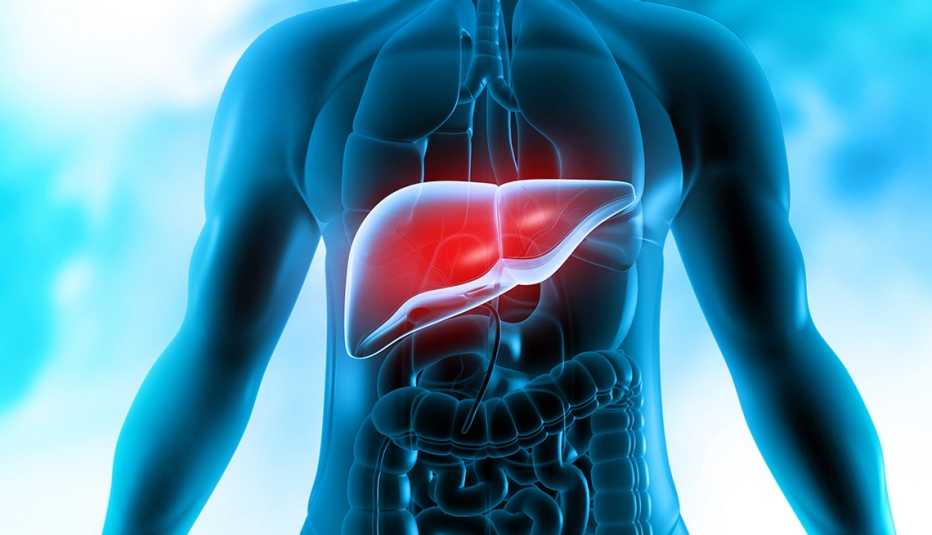Staying Fit


Many think of alcohol as the main cause of liver complications. But contrary to popular belief, various factors impact liver health, including weight, certain medications, genetics and even viral infections.
No matter the trigger, a major concern surrounding liver disease is its silent progression. Your liver could be losing its ability to filter out harmful substances from your blood long before symptoms appear.
Most of the time you don’t know your liver has been harmed until you develop the advanced symptoms of cirrhosis. “That’s the tough part of treatment,” says Anurag Maheshwari, M.D., a gastroenterologist with the Institute for Digestive Health and Liver Disease at Mercy Medical Center in Baltimore. “Convincing patients that they need to act now in order to avoid complications in the future can sometimes be a challenge, because they don’t feel any different today.”


AARP Membership— $12 for your first year when you sign up for Automatic Renewal
Get instant access to members-only products and hundreds of discounts, a free second membership, and a subscription to AARP the Magazine.
Early symptoms and warning signs of liver damage
In the early stages of chronic liver disease there are often no symptoms. Occasionally people with early-stage liver disease experience fatigue, right-side abdominal pain, increased bruising or itching — symptoms that are usually missed because they could be caused by other ailments.


Where is the liver?
The liver is located in the upper-right portion of the abdomen, below the diaphragm and on top of the stomach, right kidney and intestines. In adults, it weighs about three pounds and is shaped like a cone.
“If you have discomfort on your side, for instance, it could be a million other things,” says Jamile Wakim-Fleming, M.D., director of the Fatty Liver Disease Medical Home Program at Cleveland Clinic.
Routine checkups, lab tests or imaging studies are typically how patients first find out if they’re developing a liver problem or disease.
Signs of advanced liver disease
As liver disease advances, the signs become clearer and warrant immediate medical attention. These symptoms include:
- Jaundice or yellowing of the eyes or skin.
- Pain and distention of the abdomen due to the release of fluid from the liver.
- Swelling of the lower legs due to fluid retention.
- Confusion or forgetfulness. When the liver isn’t functioning properly, toxins build up in the blood and can travel to the brain, affecting brain function.
- Dark-colored urine.
- Pale-colored stool.
- Chronic fatigue.
- Nausea or vomiting




































































More on Health
Drinking Among Older Adults Split During Pandemic
A new survey reveals a divide between drinkers and abstainers9 Signs You May Have a Drinking Problem
Ask yourself these questions about your alcohol use8 Superfoods for Your Immune System
Add these protective powerhouses to your diet to get ready for cold and flu season … and beyond